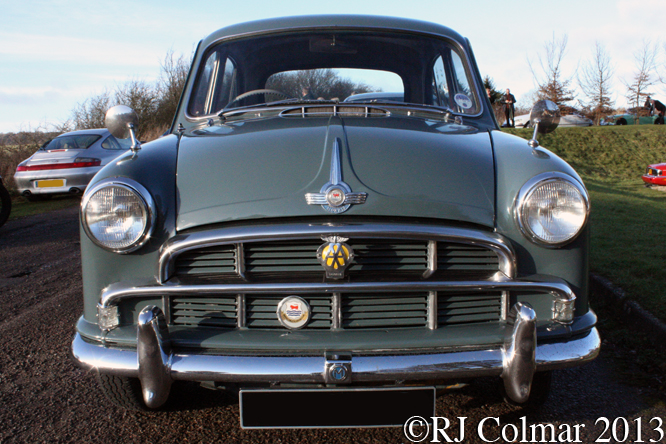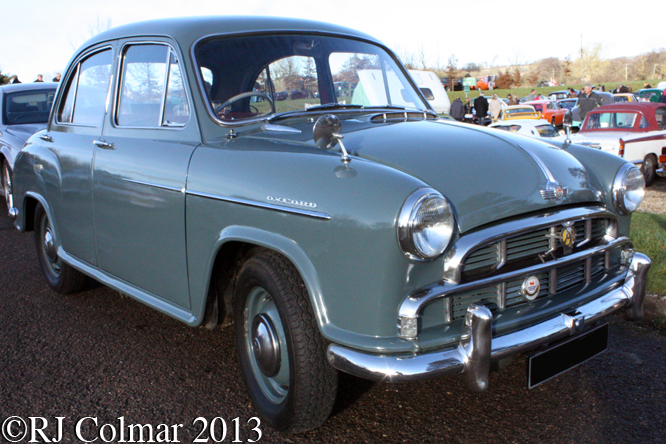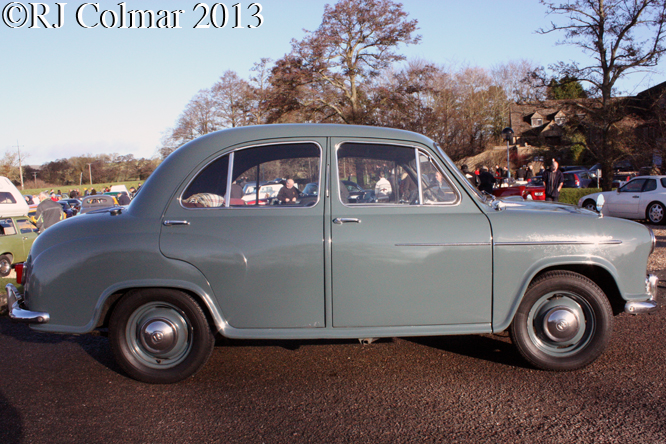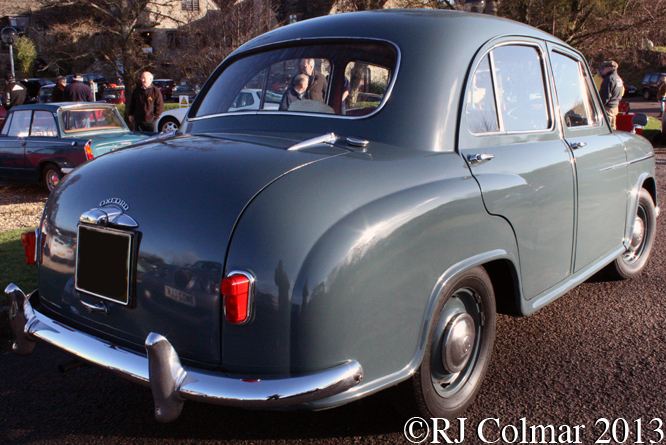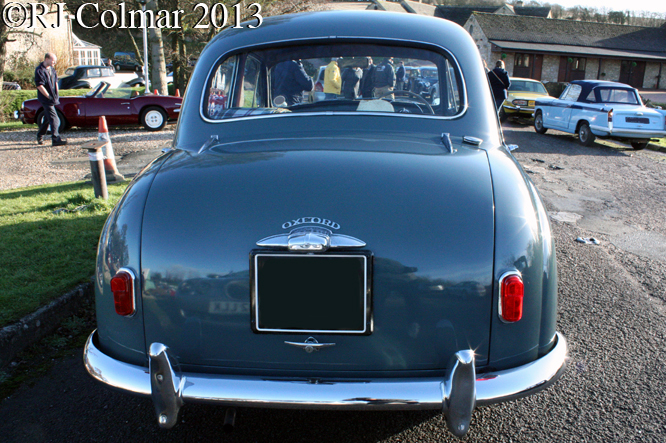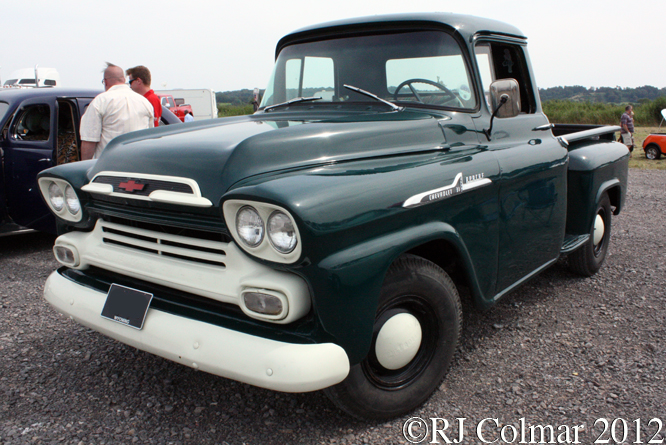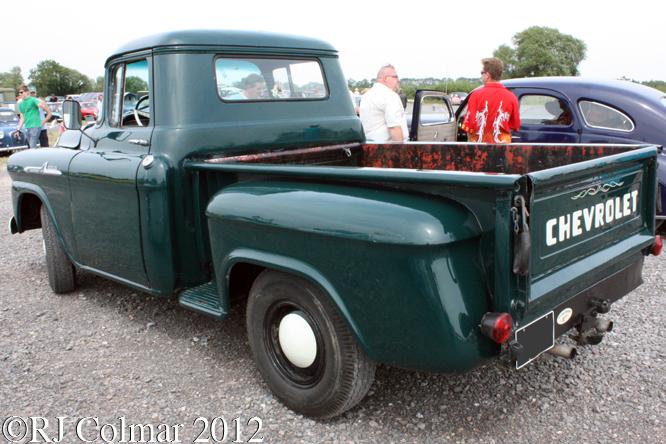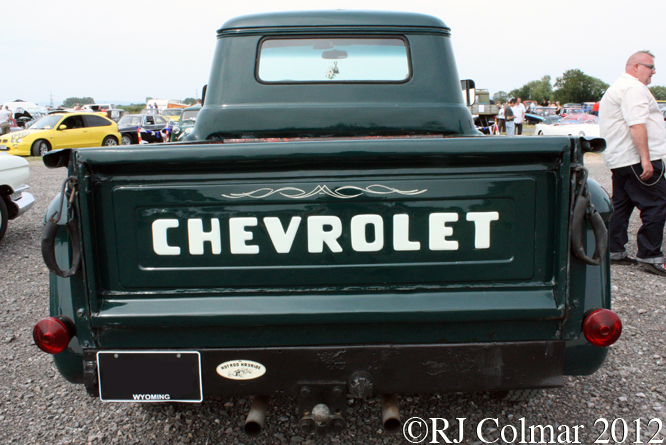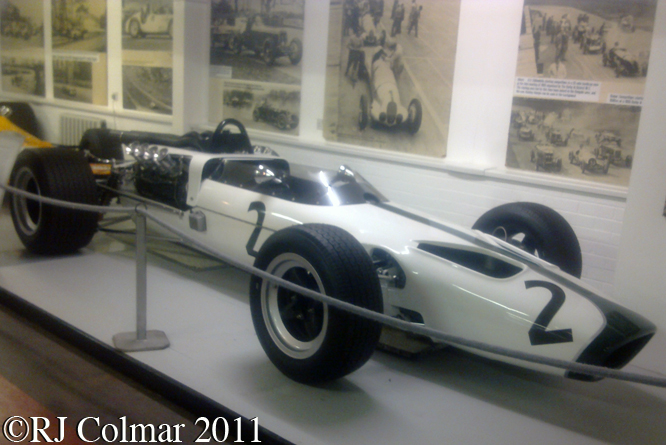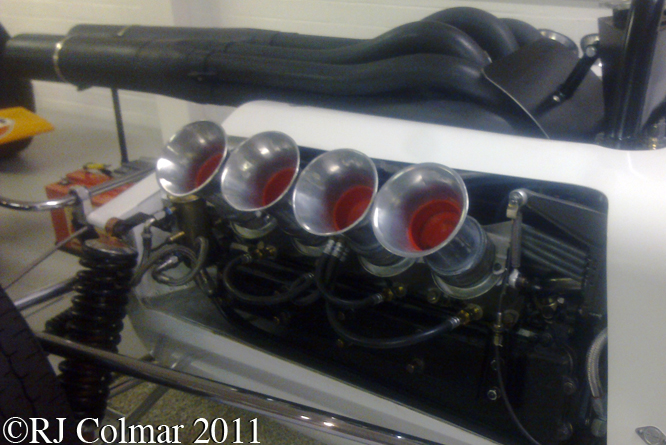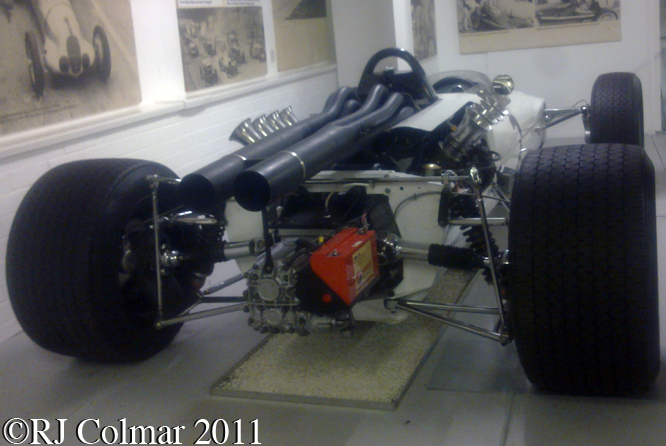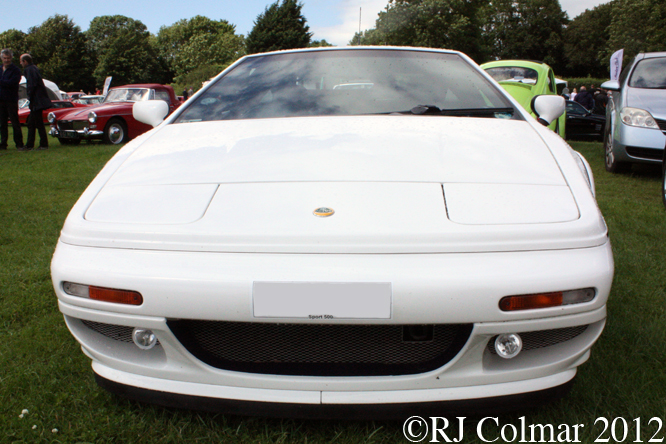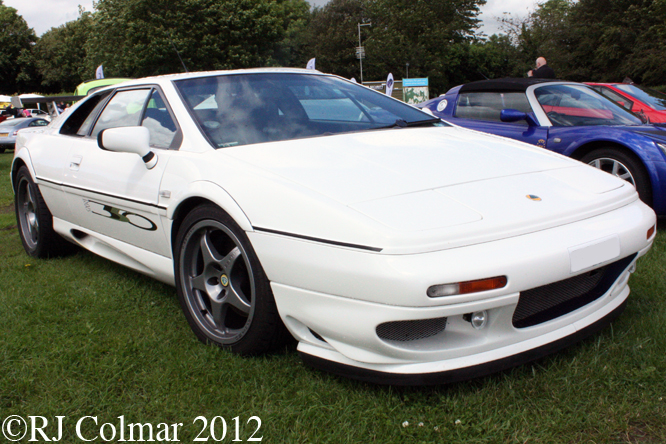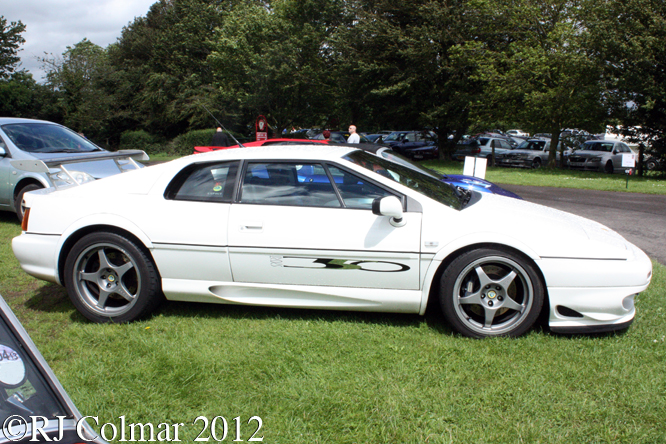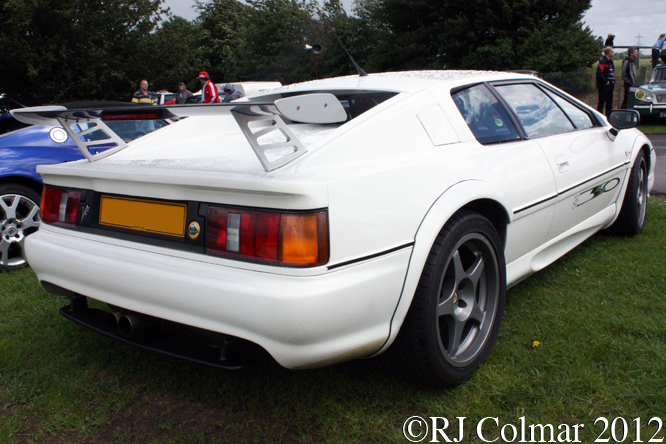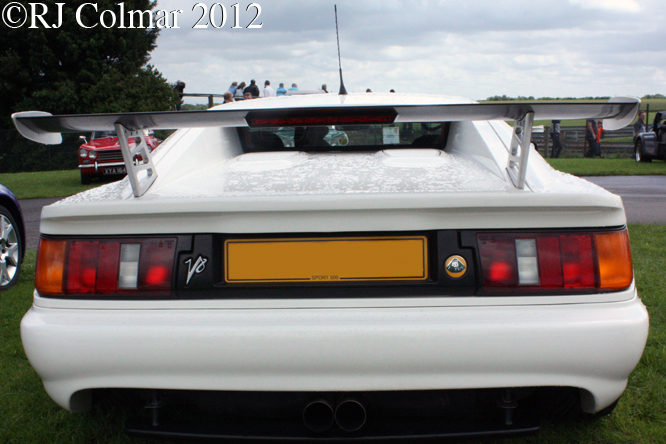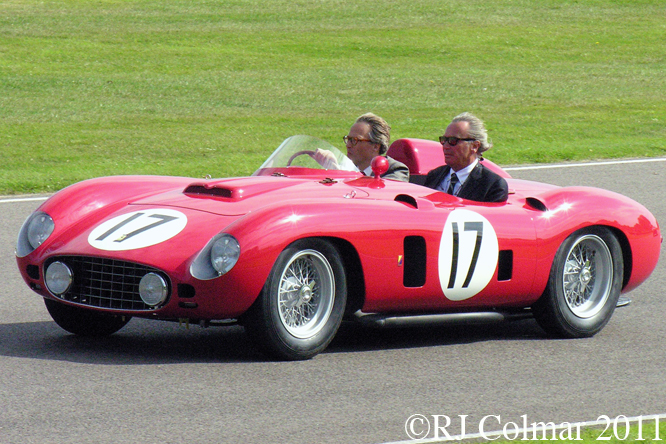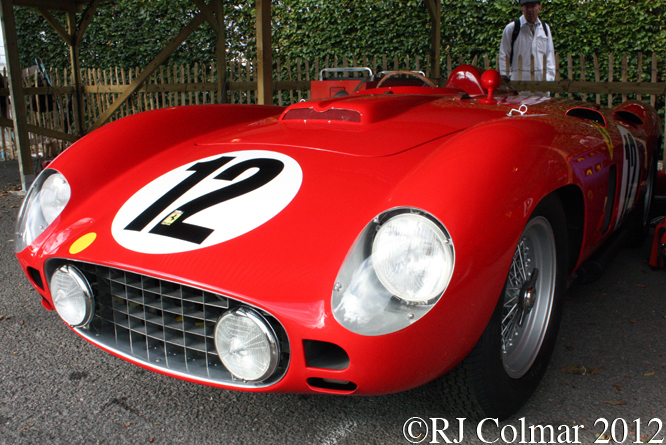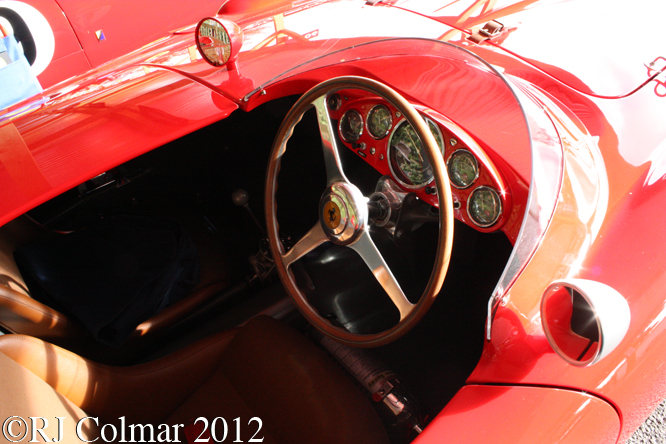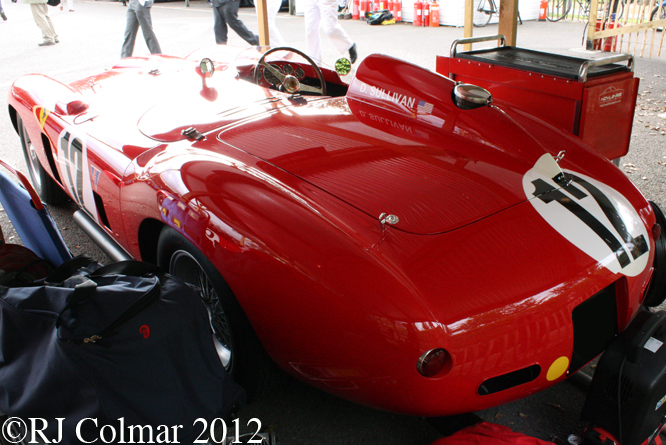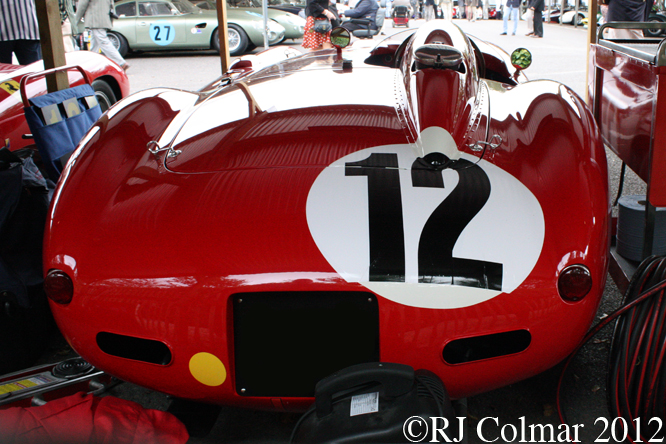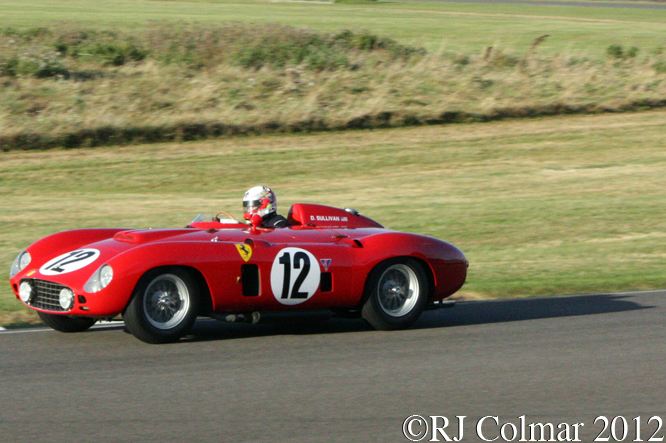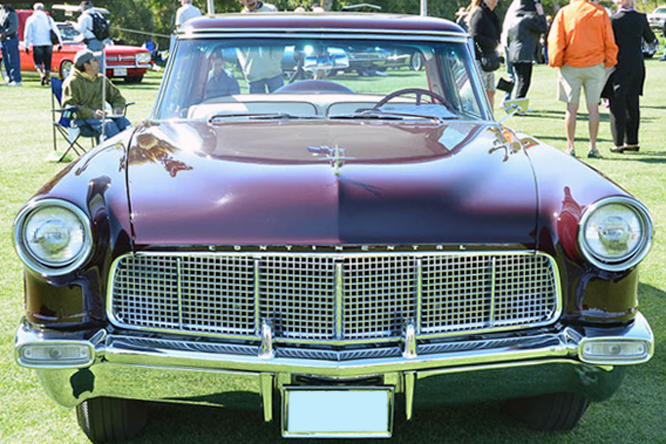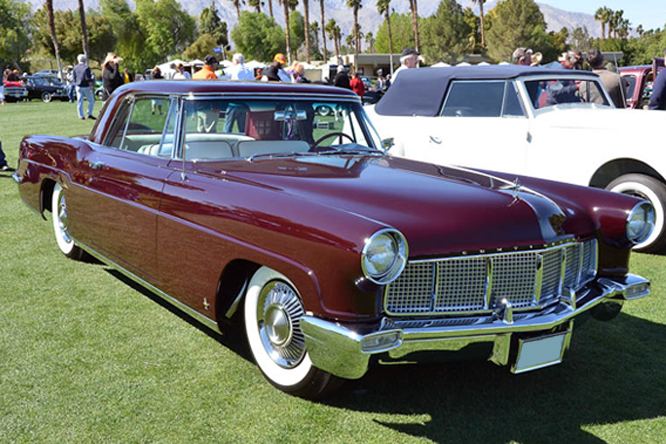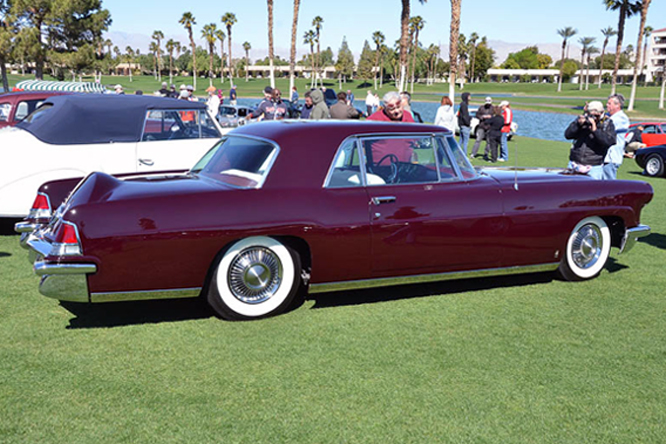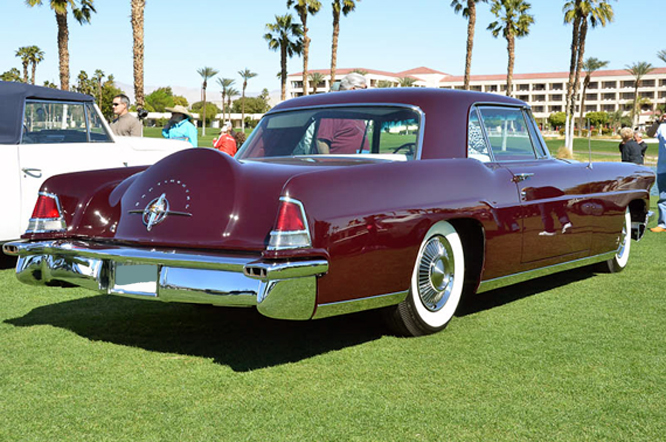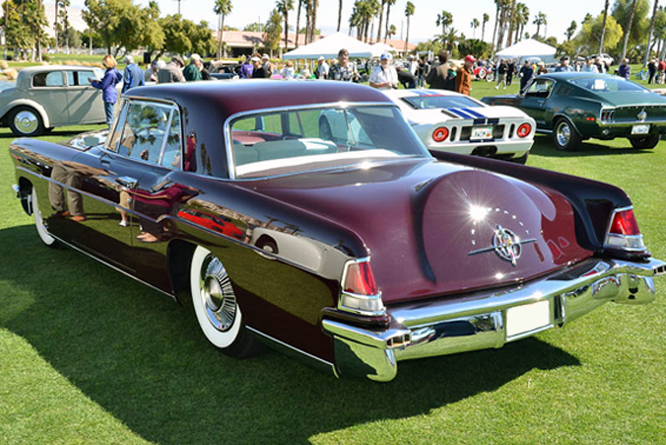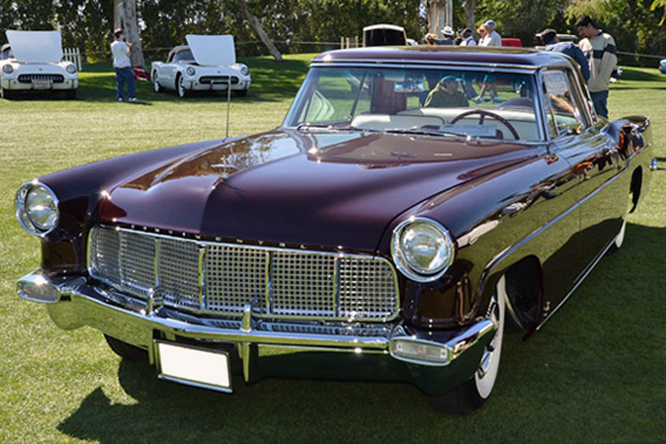Easter Monday’s meeting at Castle Combe was dedicated to the memory of Howard Strawford who died on February 23rd leaving a huge void for not only his family and friends but also the greater Motorsport community in South West England.
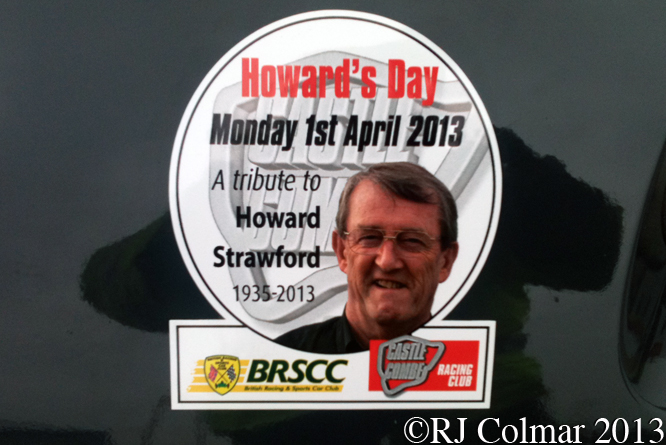
Howards legacy is the Castle Combe Circuit as it stands today which he saved from closure in the 1970’s after managing to secure the support of former World Champion James Hunt. By 1981 Howard had gained permanent planning permission to operate the track as a motor sports venue and engaged in a programme of continual improvements to the tracks facilities which have been to the benefit of both national and club motor sport. Belated condolences to Howards family and friends.
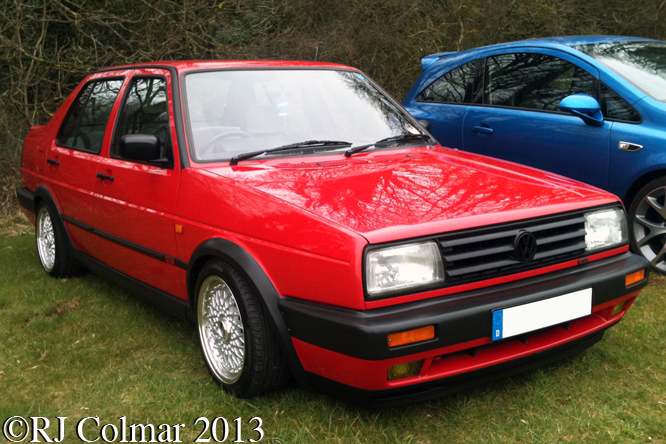
When I got to the circuit I headed straight for Tavern Club House where I had agreed to meet Ted the day before at Thruxton and enjoyed my second Big Boys Breakfast in 8 days. Afterwards Ted and I went for a stroll around the circuit when we stumbled across this immaculate 1989 VW Jetta GTi.
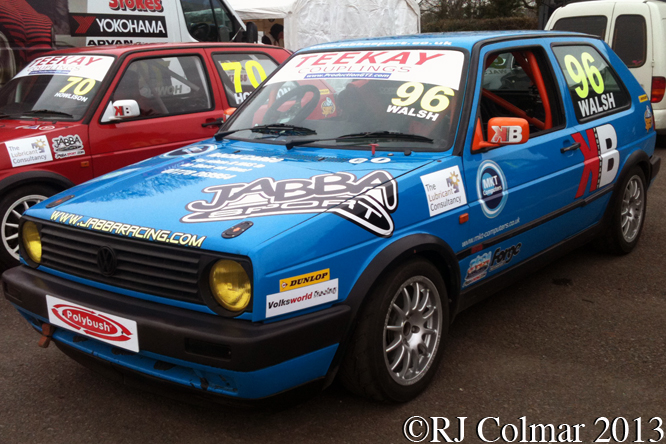
As we walked round the track the wind picked up and it got sufficiently cold for Ted to decide to head for the warmth of his dark room while I wondered around the paddock where I stumbled across Martyn Walsh’s VW Golf GTi which qualified 9th for the first of the two BRSCC Teekay Couplings Production GTi Championship races and finished 7th in the first race and went one better in the second GTi race finishing 6th.
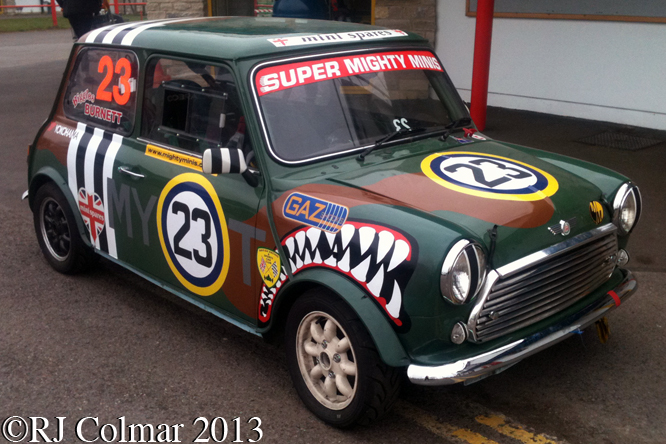
Mini’s were in abundance at Castle Combe with races for the 60 hp Mighty Mini’s and 90 hp Super Mighty Mini’s the #23 MerlinPoweredMini.com of Mark Burnett runs in the more powerful Super Mini class however on this occasion it appears he traveled from Guildford in vain having failed to set a qualifying time he recorded a did not finish (DNF) with zero laps completed in Race 1 and did not take the start in Race 2.
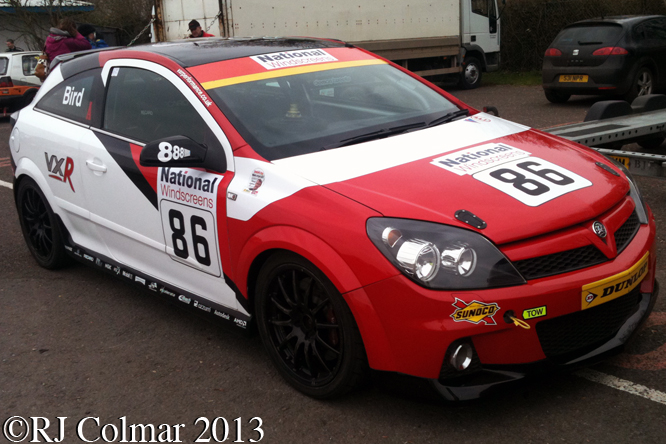
The Castle Combe Saloon Car Championship in Association with National Windscreens has some new entires this season including the #86 Vauxhall Astra of Kevin Bird who used to campaign a BMW 130i in this series. Kevin qualified 10th and finished 7th in the single race for the series.
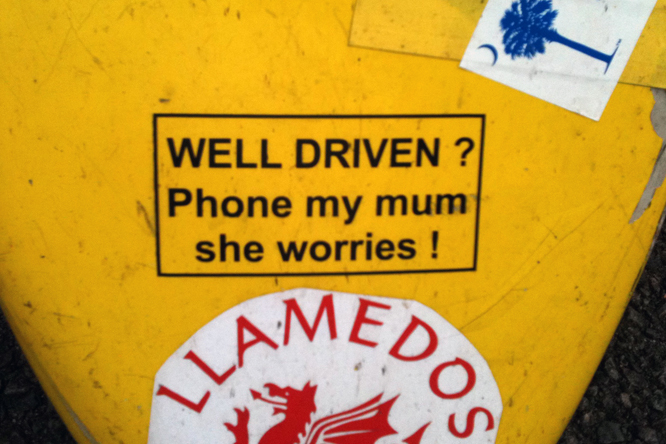
There appeared to be more stickers on Juiceie Bruceie’s BJ Welders Real Steel 4×4 / Llaemdos Racing Reynard FF84 than fibre glass, but as we shall see there was only one little incident Juiceie’s Mum might have had to worry about in the Formula Ford race for which he qualified a respectable 18th ahead of four newer vehicles.
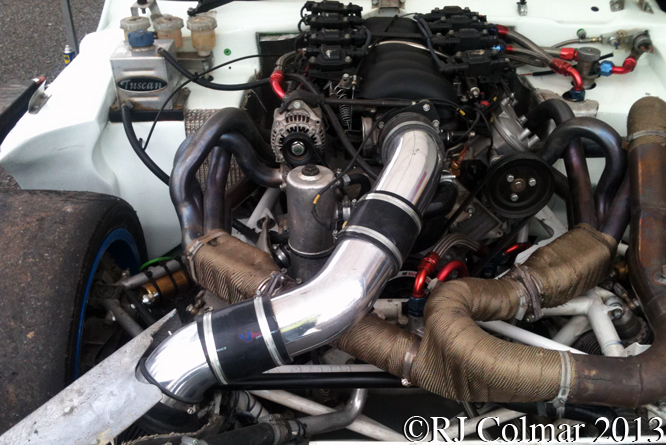
Perry Waddams used the prodigious horsepower of his Chevrolet LS3 motor to power his #77 Crowthorne.com TVR Tuscan to 12th on the grid and an 8th place finish in the Castle Combe, Sports & GT Championship supported by Siliconehoses.com.
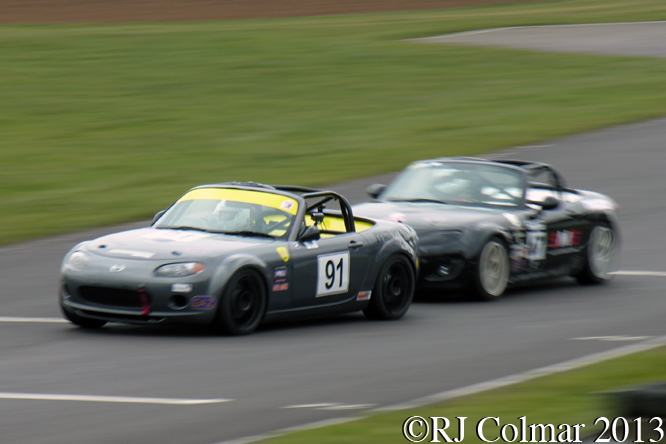
The first race in the 11 race programme only had 7 starters but it only takes two cars to make a race and Matthew Davies in the #91 Mazda MX5 Mk3 and Andrew Clarkson in the #67 Team SMG / Clarkson Electrical MX5 Mk 3 both wanted to win the first BRSCC Mazda MX5 SuperCup race of the day. Clarkson eventually won by less than a second from pole but only after at least 5 changes in the lead up to lap ten of the 15 lap race.
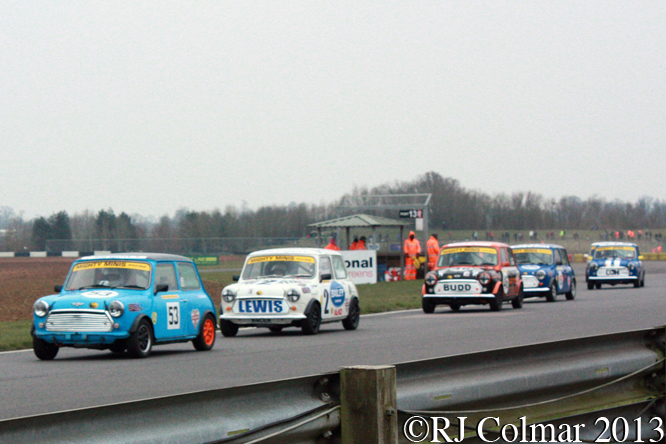
Jonathan Lewis driving the #2 Mighty Mini won the first BRSCC Mighty Mini Race from pole and is recorded as having led all but one lap however the race lead changed many more times particularly with Damien Harrington in the #53 Mini seen above leading on Westway leading into the final Camp Corner where Lewis was always ready and able to steal the lead back again. The winning margin was just .106 seconds after 13 laps.
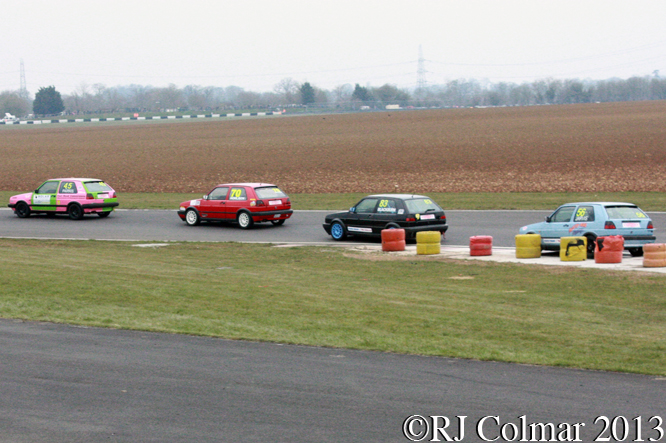
Simon Hill in his evil handling GTi provided the only opposition to pole sitter Lewis Hopkins in the BRSCC Teekay Couplings Production GTi Championship race, Lewis won the 11 lap contest by over 5 seconds. Further down the field #45 David Parris is seen in 10th place before retiring on lap 6 being chased through Bobbies chicane by #70 James Howlison, #83 Paul Blackburn and #56 Nick Jarvis who finished the 11 lap race in 9th, 10th and 11th places respectively.
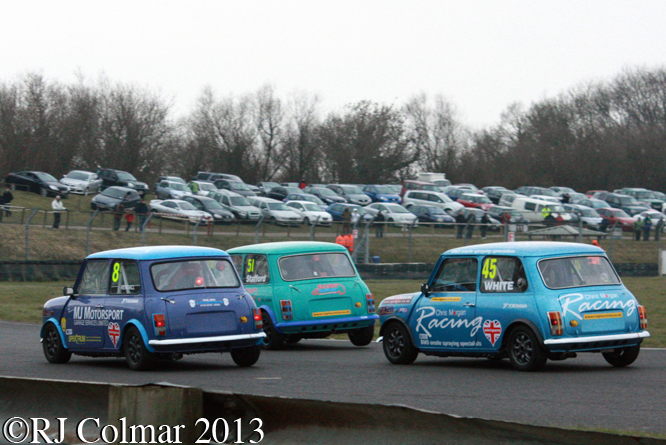
Next up was Race 1 for the Super Mighty Mini’s, Peter Trevett was swallowed up by the grid at the start and eventually finished fifth but it was Elliot Stafford who led by over a second until lap 6 when the pressure started to mount from Jamie White, Patrick Ford and Scott Kendall. #51 Elliot, who held on to win by less than a quarter of a second, is seen raising a rear wheel above as #8 Scott Kendall and #45 Jamie White try and find a way past going into Tower Corner.
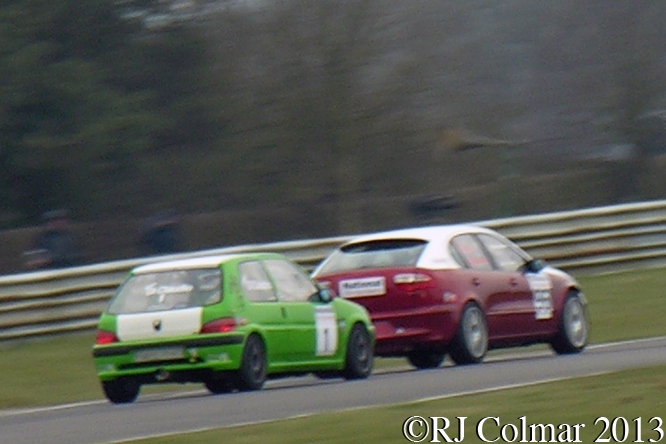
With the temperature in the tropical 3 degrees above freezing zone a great race looked in prospect from the Castle Combe Saloon Car Championship in Association with National Windscreens race, even though Mark Wyatt in his Vauxhall Astra had qualified nearly 2 seconds ahead of anyone else. William di Cluadio made a race of it and led lap one in his green championship winning W-A-S Racing Peugeot 106 GTi but Mark was back in charge until lap 6 when he retired at Quarry. di Claudio led again until lap 10 when he finally succumbed to the superior power of Rob Ballards Chippenham Conversions / Interceptor Racing SEAT Leon 20v Turbo. Rob is seen above having just over taken William out of Old Paddock on his way to a 1.5 second victory.
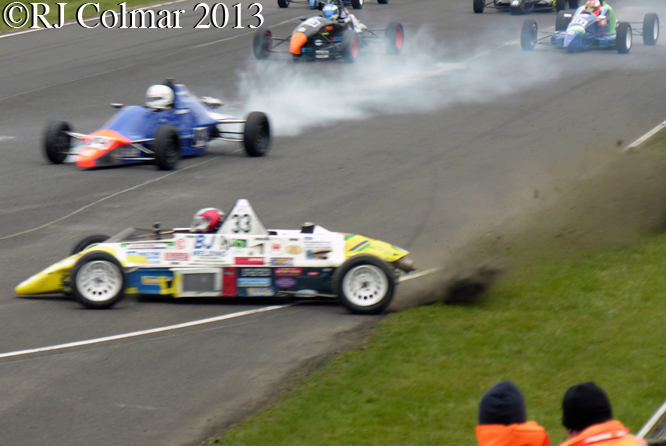
Steven Jensen started his 2013 Castle Combe Formula Ford 1600 Championship supported by StartLine with a convincing victory from pole, his only challenger was Roger Orgee who retired his #3 Van Diemen on lap 6. However down the field there was plenty of excitement, the aforementioned Juiceie Bruceie got his Reynard FF84 off to a brilliant start rising from 18th on the grid to 10th at the end of lap 1 before he appeared to out brake himself going into the Esses, Juiceie recovered and finished an eventual 16th one lap down.
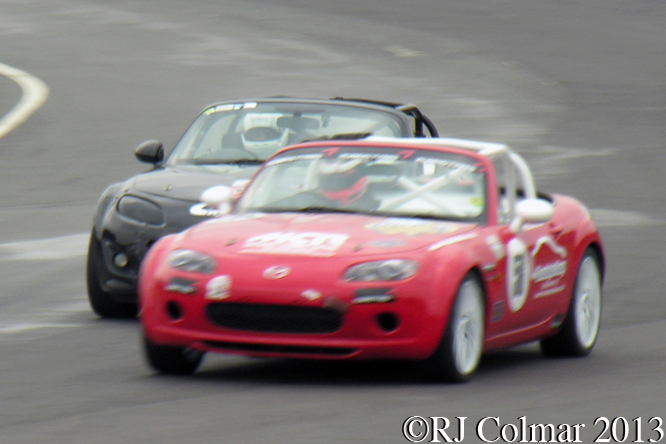
The second Mazda MX5 SuperCup race was won by Matthew Davies by six seconds from Andrew Clarkson in the #67 Mazda, who temporarily gave his second place up Mike Comber coming out of Quarry in the #58 MX5 as seen above. Mike could not make the pass stick over the remainder of the lap and settled for his second third place finish of the day.
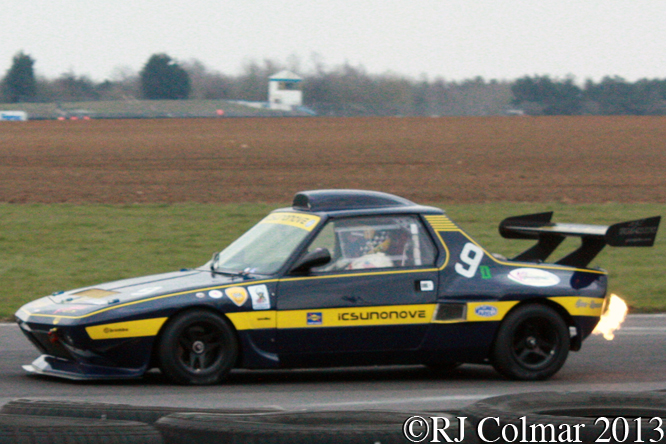
The Castle Combe Sports and GT Championship supported by Siliconhoses.com race did not live up to the expectations of a battle between the leading Radicals of pole sitter Josh Smith fellow front row starter Andrew Shanley and second row starters Manhal Allos and Simon Tilling, Tilling retired out on the circuit on lap 2 which required the safety car to neutralise the field on lap 6 and in the ensuing chaos Andrew Shanley was handed a one lap lead as a result of the wrong car being picked up as the leader. Still former drag racer Michael Kason’s Zubedo.com Dallara Fiat X1/9 provided plenty of flame spitting entertainment as it headed for a 16th place finish, which kept me occupied for the remainder of the race.
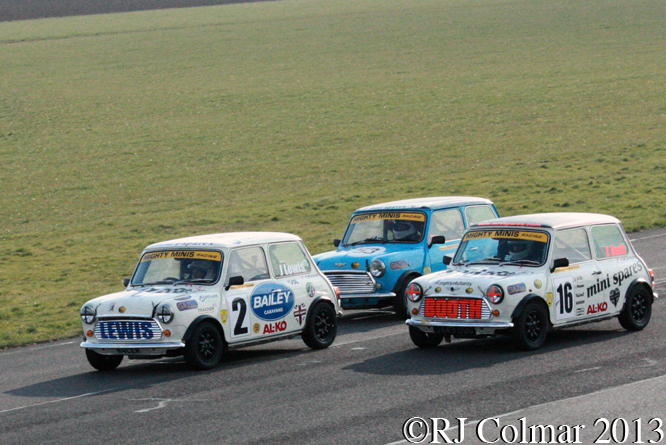
With 8 races down and 3 more to go the 60 hp Mighty Minis came out for their second run and it was a real barnstormer with Jonathan Lewis, teenager Zack Booth, Pole sitter Damien Harrington and Charlie Budd all leading at least one lap by never more than half a second. In the end Harrington pulled of a last lap last corner maneuver at the last corner Camp that stuck all the way to the finish line to win his second race of the day by .108 secs. Above #2 Jonathan Lewis, who finished 2nd, #16 Zack Booth, who finished 3rd and eventual winner #53 Damien dispute every inch of tarmac on the run up to Avon Rise midway through the race.
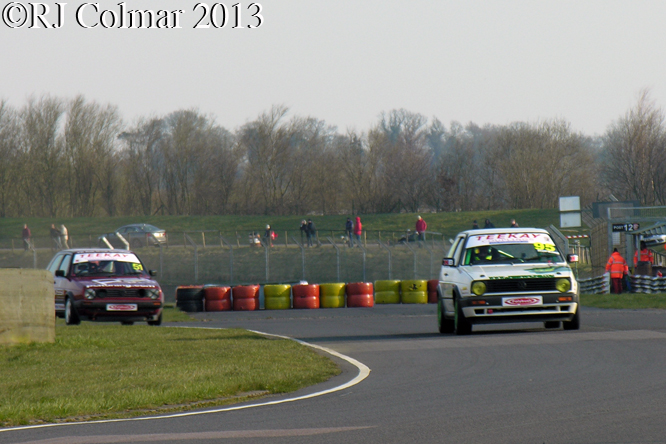
For a while it looked like Simon Hill had got on top of his handling demons which were much in evidence in the first Production GTi race but after just two laps the red #51 GTi had to concede to the faster white #95 of Lewis Hopkins who became the second two time winner of the day.
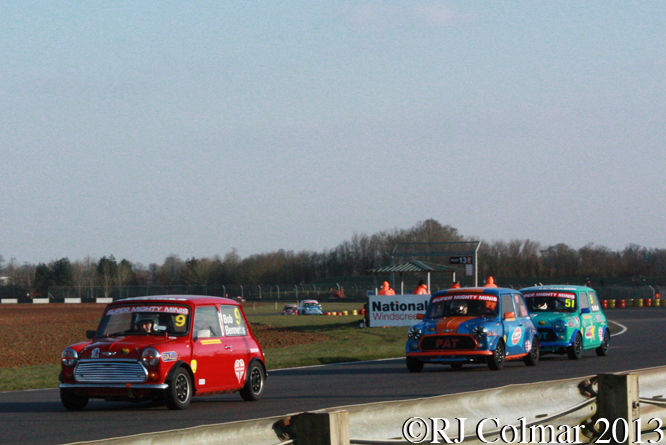
The Super Mighty Mini’s concluded the meeting with their second run and their was no going home early and guessing the result, above with two laps to go Bob Bennets, who would finish 3rd leads on lap 12, on lap 13 is was the turn of #77 Patrick Ford who finished 2nd to lead and at Camp Corner on the final lap Elliot Stafford nailed his exit perfectly to become the second two time winner of the day.
As a tribute to Castle Combes much missed savior Howard Strawford the day had served as a poignant reminder to all that Howard had done for motor sport and the wonderful legacy and high standards that those of us who remain will have to live up to.
Thanks for joining me on this ‘Howards Day’ edition of “Gettin’ a li’l psycho on tyres” I hope you will join me again tomorrow, don’t forget to come back now !
21/04/13 PS My thanks to Castle Combe historian Pete Stowe for pointing out various spelling errors in drivers names, apologies to all concerned.
